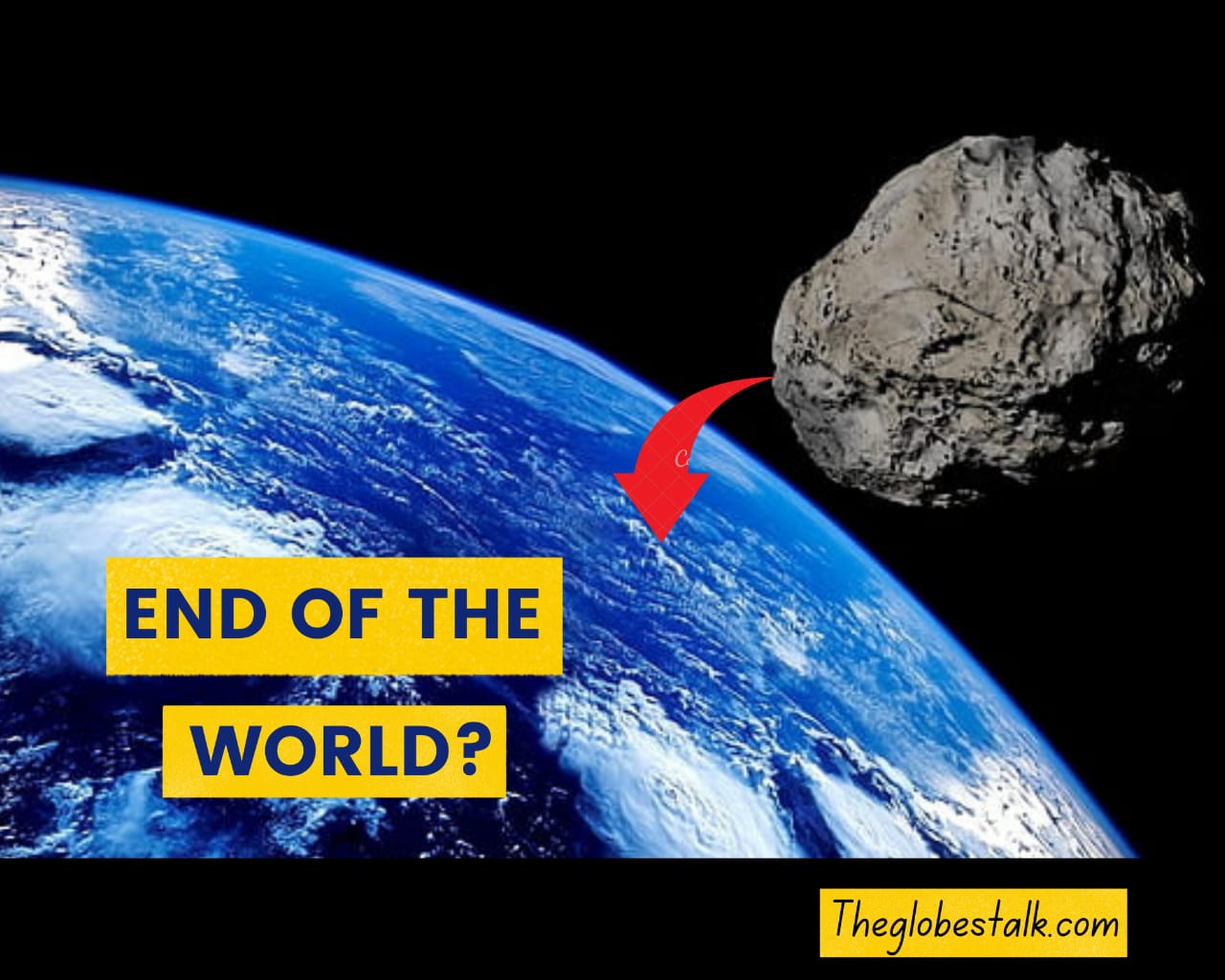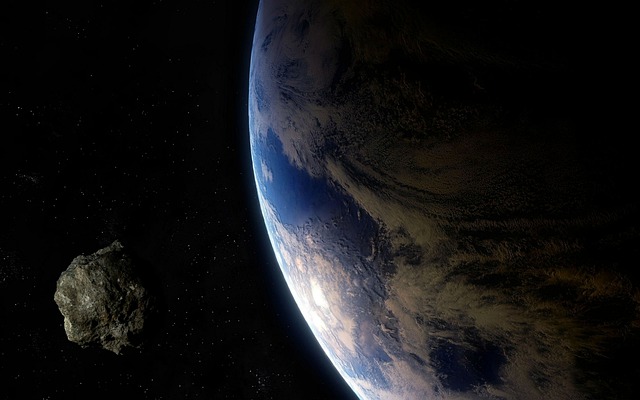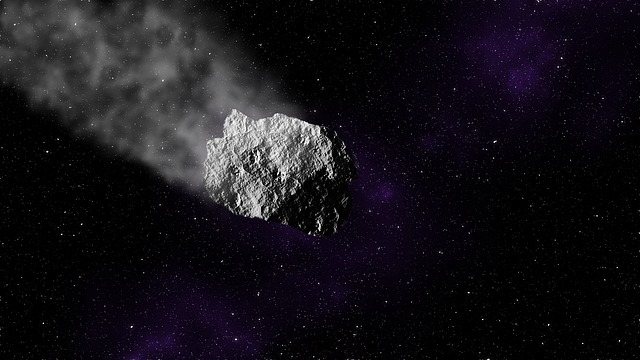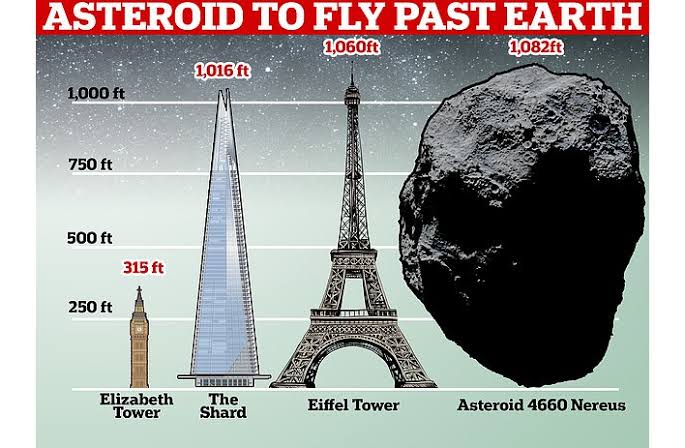A massive asteroid, 4660 Nereus, the size of the Eiffel Tower in Paris, might collide with the Earth. On December 11, 2021, the asteroid will pass by Earth. According to reports, the asteroid is 330 meters in diameter and will fly by Earth at a distance of 3.93 million kilometres. The asteroid has been classified as possibly dangerous despite its great distance.
According to NASA, the asteroid would most likely travel through Earth’s orbit but will not hit the atmosphere. The absolute magnitude of asteroid 4660 Nereus, according to WION, is 18.4. Asteroids smaller than 22 are classified as potentially hazardous by NASA.
Will Asteroid 4660 Nereus hit Earth? This article will go over them. So, in order to pique your interest, let’s dive right in.
What is the Asteroid 4660 Nereus? Who discovered 4660 Nereus?
The 4660 Nereus is a fairly small asteroid. It is an important asteroid that has a high albedo. It was discovered by Eleanor F. Helin on 28th February 1982. Nereus will make 7 approaches nearby Earth between 1900 and 2100. The distance between these approaches will be less than 5 million kilometres.
The next approach will be on 11th December 2021 with a distance of just 3.9 million kilometres whereas the closes approach by it to Earth will be on 14th February 2060 when it will be less than 1.2 million kilometres to Earth.
The 2021 approach will have an apparent magnitude of 12.6. This would require a telescope of 100mm objective lens for the Nereus to be seen.
How did the 4660 Nereus get its name?
Generally, the naming of an asteroid is in the hands of the founder, but Helin being generous gave the naming rights of the asteroid to the Planetary Society. Further, a contest was organized and the winner of the contest, an employee of NASA named it Nereus after the Greek god who had characteristics of Appolo and Poseidon.
How fast is asteroid 4660 Nereus approaching Earth?
At a speed of nearly four miles per second, asteroid 4660 Nereus is approaching Earth. It has been classified as possibly dangerous by NASA. However, this asteroid will pass by Earth at a distance of 3.93 million kilometers, negating any imminent threat. Despite the fact that the distance between Earth and Moon is ten times greater, NASA has designated this asteroid as a “danger” and is keeping a careful check on it.
Asteroid 4660 Nereus is being monitored by NASA.
For the uninitiated, Asteroid 4660 Nereus was found for the first time in 1982. This asteroid is noteworthy not because it is ‘possibly hazardous, but rather because it comes near to Earth on a regular basis. Every ten years, its 1.82-year orbit around the Sun takes it closer to the planet. NASA and the Japanese space agency JAXA have been monitoring it since 1982.
Can we see Nereus 4660?
With a visual magnitude of 12, the asteroid will be very faint to be visible with naked eyes. Then, is there no chance of seeing the asteroid? It could be seen with a telescope. It would look just like a star but since they are much closer than stars, they would appear as moving stars. A long-exposure shot would be a clearer way of detecting the space rock and it could be seen as a streak.
Lots more information here:
A massive asteroid the size of a bomb is heading straight towards Earth.
According to scientists, an asteroid approaching our planet has a diameter of 84 to 190 meters and is possibly more powerful than a nuclear bomb. According to analysts, this asteroid, dubbed 2018 AH, visited Earth in 2018, thus the designation, and would be about similar to the Tunguska asteroid, which produced a 12-megatonne explosion in 1908. AH will be at a safe distance of over 4.5 million kilometers when it gets closest on December 27, 2018, but it has apparently had a brush with a planet in the past.
The celestial body was assigned to the Apollo category, which is the most dangerous. The Apollo asteroids’ orbits intersect Earth, posing a collision danger. The space agency, on the other hand, considers that a collision with Earth is quite unlikely.
Related: What would happen if asteroid Apophis hit Earth in 2022?
The Nereus 4660 is classified as potentially hazardous by NASA.
Despite the fact that the asteroid has little danger of colliding with the Earth, NASA has classified Nereus 4660 as possibly hazardous.
An asteroid traveling within 120 million miles of the Earth’s surface is classified as a potentially dangerous near-Earth object by NASA. Scientists keep track of these requirements in order to report any conflicts. These asteroids are regularly studied since even a small deviation from their intended route might cause damage to the world.
What is the size of the asteroid 4660 Nereus?
The 330-meter-long asteroid is 30 meters longer than the Eiffel Tower and 20 meters longer than City’s Shard, which is the world’s highest finished structure. It’s roughly the length of three football fields or the height of 57 giraffes. It is estimated to be larger than 90% of asteroids.
Will Asteroid 4660 Nereus collide with the Earth?
On December 11, 2021, the 330-meter-long asteroid 4660 Nereus will whizz by us at a mind-boggling 6.58 kilometers per second, some 2.4 million miles away. While it may not appear to be a great distance, after all, it would take 100 trips around the planet to cover that distance Nasa has categorized the asteroid as a possibly dangerous near-earth object.
This is because it is larger than 150 meters and will approach our planet at a distance of less than half the distance between the earth and the sun (approximately 93 million miles), putting it on a collision path with our planet if its orbit deviates slightly. It is also approaching Earth far closer than 1994 WR12, which was 3.8 million miles distant when it passed by on Monday, November 29.
Despite the fact that 4660 Nereus is unlikely to constitute a hazard in 2021, it is expected to approach Earth much closer in the future. It will pass within 745,000 miles of Earth on Valentine’s Day in 2060. So it could be worth it to get those flowers or plan your proposal ahead of time.
Also read: What asteroid has the highest chance of hitting Earth?
Asteroid in the form of an egg with a value of $4.7 billion
The asteroid is called 4660 Nereus after the Greek sea deity and son of Gaia, the personification of Earth, according to NASA. It is shaped like an egg. The distance between Jupiter and 4600 Nereus will be 3.86 million kilometers (3 million miles), which is 10 times the distance between Earth and the moon. This may seem like a long way for us simple mortals. But it’s too near in the universe’s language of measurement.
This near-earth asteroid possesses rare-earth material reserves (including cobalt and nickel) worth $4.71 billion, according to Asterank, a database that records over 600,000 asteroids.
The asteroid 4660 Nereus will reach Earth’s orbit on December 11 at a speed of 23,700 kilometers asteroid is approximately 330 meters in length. NASA classifies any objects that arrive within 193 million kilometers (120 million miles) of Earth’s orbit as “near-Earth objects, while those approaching Earth at high speeds within 7.5 million kilometers (4.65 million miles) are classified as “possibly dangerous.
Were missions planned for the 4660 Nereus?
Nereus was planned to be a visiting site for the Japanese mission Hayabusa and Near-Earth Asteroid Prospector (NEAP). The mission of Hayabusa was delayed by 10 months and the NEAP probe could not be realized. It was also planned to be the flyby target for the NEAR robotic mission which eventually visited 253 Mathilde and 433 Eros.
Conclusion
Larger meteorites, on the other hand, form craters like the Barringer Meteor Crater in Arizona. The Canyon Diablo Meteorite, which was mostly nickel-iron and weighed around 150,000 tons when it crashed to Earth roughly 40,000 years ago, produced this crater. It had a diameter of roughly 55 yards (50 meters) and weighed around 150,000 tonnes. The world’s first and greatest impact crater is Meteorite Crater. The Department of the Interior listed Meteor Crater as a Natural Landmark in 1968.
Thank you to everyone who read the entire article and put their faith in us for the information. If you want to learn more about our space or our planet, you can look through our various articles, which can help you learn a lot about this strange universe!
Please share your thoughts and feedback in the comments section. If you find something intriguing in our article that surprises you, please let us know by leaving a comment. Stay curious until the next article!
Resent posts:



